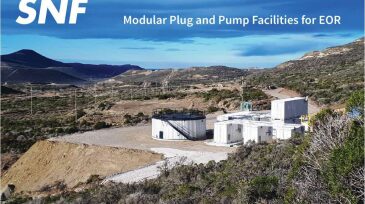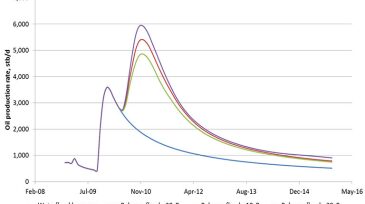polymer flooding
-
This paper describes how a better understanding of the connection between the well and the reservoir through use of fiber-optic sensors can improve reservoir simulation models, decision-making, and well-performance evaluation.
-
In this study, the authors show that high-temperature, high-salinity polymers can exhibit low adsorption and retention in carbonate reservoir rock at ultrahigh salinity conditions.
-
The authors demonstrate that alternating injection of polymer and water is effective and economical for heavy oil fields, even offshore.
-
SponsoredPolymer flooding increases the RF up to 20% at $3 to $6 per extra bbl of oil. It also contributes towards reducing CO2 emission by 3–6 times per bbl. It’s a proven technology with more than 300 projects worldwide. SNF offers modular plug and pump facilities connected to existing infrastructure.
-
The complete paper presents steps to accelerate enhanced oil recovery (EOR) in a Grimbeek field from a four-injector pilot to 80 new injectors in a rapid deployment.
-
The complete paper discusses the importance of adequate preparation and the approaches used to overcome challenges of EOR operations, including handling back-produced polymer.
-
Although polymer flooding has become a promising enhanced oil recovery (EOR) technique, no field tests have been performed to date in Alaska’s underdeveloped heavy-oil reservoirs.
-
This paper discusses an enhanced-oil-recovery (EOR) polymer-flood pilot at the Captain field in the UK North Sea during 2011–2013.
-
Researchers from Chevron are looking into a new approach to understand the drivers of polymer hydration. How might this affect the design of mixing systems in the field, and could it affect offshore EOR applications?
-
This paper addresses the challenges in modeling highly unstable waterflooding, using both a conventional Darcy-type simulator and an adaptive dynamic prenetwork model, by comparing the simulated results with experimental data including saturation maps.










